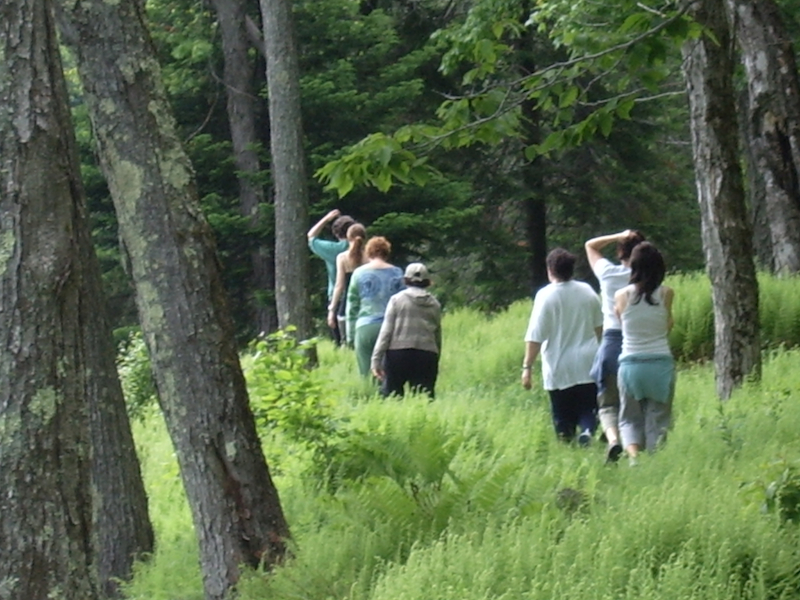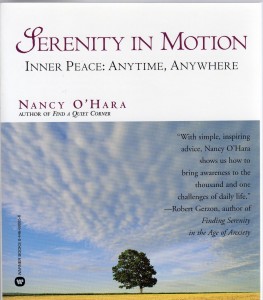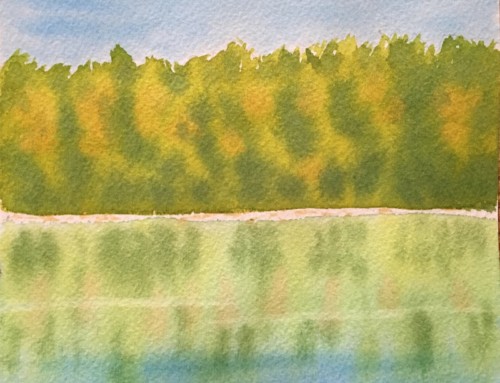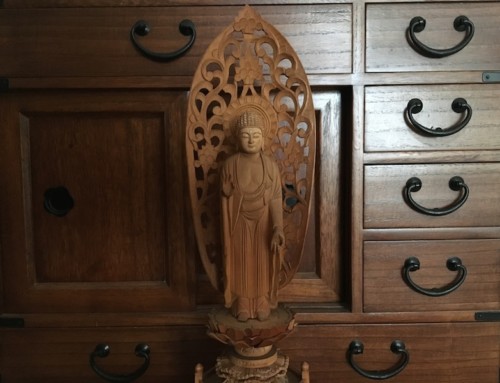There is a grave misconception that serenity can only be had while meditating and that meditation can only be done in a quiet room with no distractions. Many people think that meditation is a break from life, a mind vacation, a time-out from the usual, and that if we do this, if we take these breaks, then the rest of our life will run smoothly.
While there is some truth to this, mostly it’s an unbalanced view of what meditation is and how it can work in our lives. The most important thing to know is that meditation is not a withdrawal from life; it is an extension of it. And while it is crucial to sit still, as described in Just Sitting, if we limit our opportunities for spiritual growth and serenity to the times when we are still, we will be doing ourselves a disservice, especially since most of our time is spent other than sitting still.

Mindfulness in Motion
Sitting still is merely the foundation for building a complete life of serenity. We cannot do without it. But just as a foundation alone does not make a home, sitting still by itself does not make a serene life. And just as a house will crumble and fall without a foundation, so will our life if we do not practice sitting still. But there is more to a calm mind than just sitting still. Once we begin our sitting-still practice, we can then take what we learn there and apply it everywhere else. The first place we can use it—the place where we are most of the time—is the place of being in motion. And being in motion and approaching it as practice is a lovely way to engage with life and nurture your serenity.
The most vital element of this practice is mindfulness. In the practice of being still, you learned about concentration, about paying attention, about listening, about constantly bringing yourself back to your breath, your belly-mind, or to other being-still moments. This is the beginning of mindfulness. So many of us reside either in the past or in the future. We obsess about what did or didn’t happen or what will or won’t happen next. Our minds become filled with worry or anxiety.
Mindfulness is the cure to an overflowing, chattering, busy mind. With mindfulness, we simply draw our attention to the present moment, activity, or feeling.
We pay attention to what is happening right now by concentrating on the action itself. Lose yourself in what you are doing. Get rid of the idea “I am doing” or “I am feeling” and just do, just feel. When you are self-conscious, you cannot concentrate on anything. Freedom from self-consciousness through mindfulness allows for a creative and productive moment, day, and life.
When mindfulness is practiced, thoughts of the past or the future begin to recede and you become present to what is happening now. When you are present, your life does not pass you by as you wait for it to happen. It happens as you live it. It cannot be any other way. The truth and power of this will be revealed as soon as you begin to practice mindfulness. You can do this any place, at any time—being still or being in motion. And from this, you can build your own temple of serenity.
from Serenity in Motion – Inner Peace: Anytime, Anywhere






“Mindfulness is the cure to an overflowing, chattering, busy mind.” If the cure fits, I must have the disease.